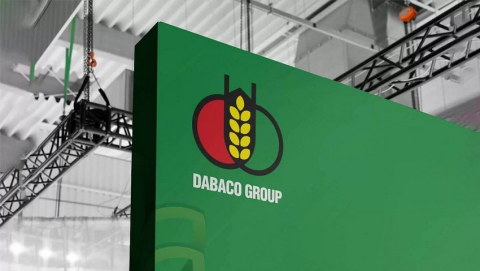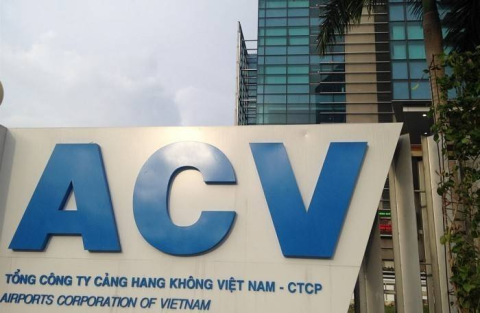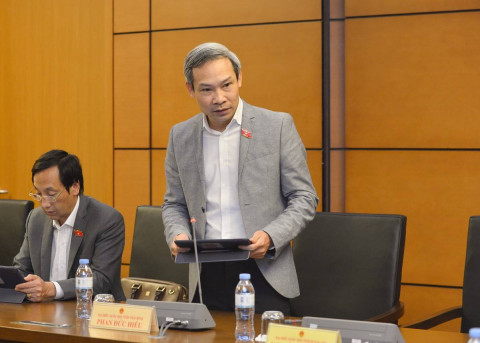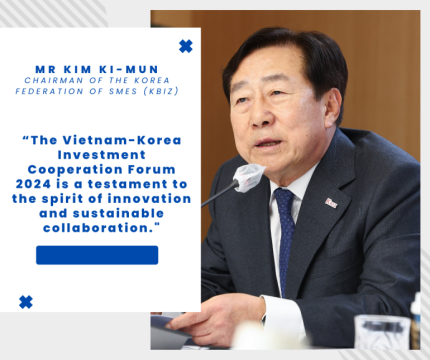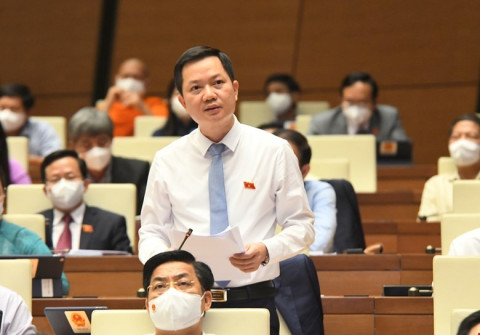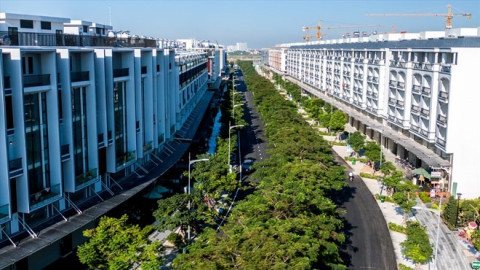increasing the textile industry's competitiveness by digitising and promoting
- 131
- Enterprise
- 01:58 30/06/2023
DNHN - The integration of production stages in the textile and apparel industry not only increases labour productivity and decreases expenses, but also increases the industry's competitiveness in domestic and international markets.
The connection between production stages in this industry not only increases labour productivity and decreases costs, but also increases competitiveness in domestic and international markets, attracts customers, and provides quick access to customers.
According to the Vietnam Textile and Apparel Association (Vitas), the total export turnover of the textile and apparel industry in the first half of 2023 is projected to reach approximately 18.6 billion USD, a decrease of 17.6% compared to the same period last year. However, the textile and garment industry faces numerous obstacles, such as the existence of international inventories, high inflation in some major markets, the Fed's continued interest rate hikes, lingering effects of the pandemic, war, and diminished purchasing power.

The Vietnam Textile and Apparel Association (Vitas) and Jack Company organised a workshop titled "Promoting digitalisation, greening textile production" to address these issues. Mr Vu Duc Giang, the president of Vitas, remarked that the entire Vietnamese textile and garment business community, including those with foreign investment, quickly adapted and found a way out through digitization and greening.
Simultaneously, it is not only the digitization and application of technology but also the greening of the textile industry. To reduce resource consumption, greenhouse gas emissions, and water and chemical use, many large markets, such as the European Union, require textile products to have a long shelf life, be recyclable, and be reusable. This presents a significant obstacle for the textile industry.
President Vitas emphasised that the government has adopted the Textile Strategy 2030-2035, which will serve as the industry's foundation for growth. However, this is only a necessary condition; it is not sufficient. According to Mr Giang, the government must define a specific strategy for the development of industries, including the textile industry, and plan the required solutions in detail.
Specifically, the development of industrial parks to attract investment in the textile and dying industry is a significant challenge, especially when the supply is limited and import-reliant. It is worrisome that there are 17 Free Trade Agreements (FTAs), many of which impose requirements beginning at the fibre level.
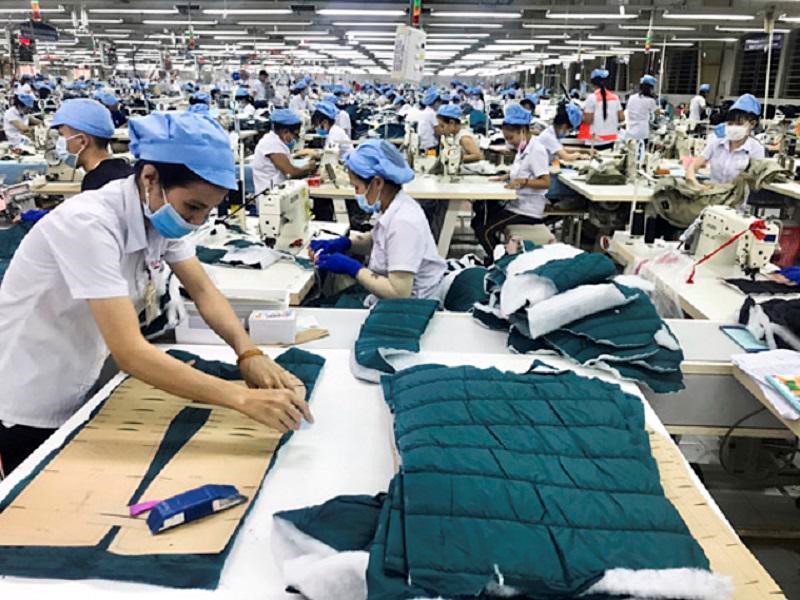
Therefore, President Vitas emphasised that the government must have a comprehensive plan and clearly define the responsibilities of each locality to attract investment in the textile and dyeing industry. This is not only the task of the future but also an urgent task of the present that requires reinforcements and a well-defined strategy.
Digitization and greening are inevitable trends in the textile industry's vision for 2050. Textile products must adapt to the concept of recycling and recirculation, which is not limited to paper products.
The government must therefore assist businesses in developing a greening strategy and investing in factories that meet work environment standards, treat wastewater and emissions, and utilise renewable energy. from solar energy.
In particular, a Natural Resources and Environment Fund is established to support green businesses with low-interest loans (between 0 and 2 per cent per year) to encourage businesses to comply with COP 26 commitments. Government funding is required for the implementation of this strategy.
PV (t/h)
Related news
- Connecting Leaders, Shaping the Future: Strategic Leadership Planning Meeting – CorporateConnections Hanoi A
- Sunlight - Unilever Vietnam Recognized for Outstanding Contributions to the National Initiative Supporting Women Entrepreneurs
- Deputy Prime Minister Nguyễn Chí Dũng: “The country’s major challenges weigh heavily on my mind — and we must resolve them together.
- Unitsky String Technologies signs cooperation agreements with three Vietnamese partners, opening a new direction for smart mobility and sustainable development
- When artists do business – livelihood is no poetry!
- Before the D‑day to abolish flat‑rate tax: Fear of technology and costs leave small traders struggling to adapt
- Vietnamese enterprises at a crossroads: the impact of a potential US–China deal
- "Digital technicians" must not be forgotten if Vietnam aims to meet its strategic goals
- HDBank: Impressive profit growth, leading in profitability and advancing international integration
- TNI King Coffee sued for over VND 5 Billion in unpaid debts
- VINASME and Jeonnam Technopark Sign MOU on technology cooperation, human resource training, and trade promotion
- Vietnamese entrepreneurs strengthen ASEAN connectivity in the digital iIntegration era
- Prime Minister: Vietnam aims to become a regional logistics hub
- Vietnam upgraded to Secondary Emerging Market by FTSE Russell
- Hanoi’s economy grows 7.92% in first nine months of 2025, FDI surges nearly threefold
- Vietnam’s strong gdp growth fails to ease labor market distress
- US tariffs on Brazil propel Vietnam’s pangasius into global spotlight
- VietLeap AI Accelerator launches: A strategic springboard for Vietnam’s AI startups
- CICON expands strategic alliances: A new step forward in Vietnam–Korea business connectivity
- What must Vietnamese enterprises do to maintain their position in the global supply chain?
Đọc thêm Enterprise
List of Vietnam’s 25 Best Workplaces 2025
Great Place To Work® has officially announced the 25 companies featured in the Best Workplaces in Vietnam™ 2025 ranking.
The ambitions of major enterprises in 2025
Major enterprises such as Dabaco, FPT, and KBC have set ambitious plans for 2025, demonstrating flexibility and sharpness in their business strategies.
What do domestic businesses need to overcome difficulties?
Strong and synchronized government support policies are crucial in helping Vietnamese enterprises navigate the current challenging period.
ACV achieved net profit surpassing VND 11,560 billion in 2024
Vietnam Airports Corporation (ACV) has recently announced its 2024 business results, reporting a net profit exceeding VND 11,560 billion, marking a 37% growth compared to the previous year.
Increasing taxes on pick-up trucks: The need to hear public opinion
The proposed tax increase on pick-up trucks is sparking debate. Many representatives argue that this decision could impact workers, businesses, and the domestic automotive market.
"The Vietnam-Korea Investment Cooperation Forum 2024 is a testament to the spirit of innovation and sustainable collaboration."
For Mr. Kim Ki-mun, Chairman of KBIZ, the Vietnam-Korea Investment Cooperation Forum 2024, scheduled for November 21, is not merely an event but also a testament to the spirit of innovation and sustainable collaboration between nations.
KBIZ's 60-year journey in building a solid foundation for South Korea's small and medium enterprise community
With over 60 years of establishment and development, the Korea Federation of SMEs (KBIZ) has emerged as a pioneering force in supporting the small and medium-sized enterprise (SME) community in South Korea.
What categories are included in the additional audit subjects?
On the morning of November 7, the National Assembly discussed the draft amendment of several articles across seven laws, with a particular focus on adding new audit subjects.
Institutional obstacles "tie up" enterprises and challenge economic growth
During a session discussing the 2024 socio-economic development plan, National Assembly deputies emphasized that institutional barriers remain a significant "obstacle" for businesses.
More than 1,000 new real estate businesses established in Ho Chi Minh City, transactions grow
In the first nine months of 2024, Ho Chi Minh City's real estate market witnessed the establishment of over 1,000 new businesses and recorded 1,600 property transactions, signaling a positive recovery trend.



